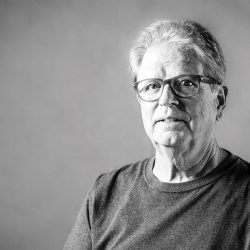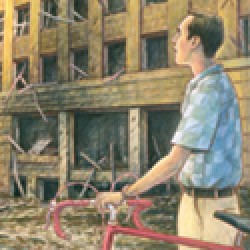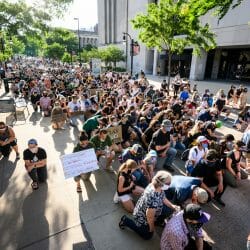Cambodia Protests
As emotionally bruising and verbally toxic as the political climate has been, it’s healthy to recall that it could be much worse. Mark Larson MS’72, PhD’80 knows, for instance, that it can be literally toxic. Larson was on campus in May 1970, when he captured images of the National Guard patrolling Bascom Hill and protesters running through clouds of tear gas.
That spring, the United States expanded a campaign of air and ground strikes in Cambodia during the Vietnam War. On college campuses, protesters demonstrated against the military action, and at Kent State University, members of the Ohio National Guard fired on students, killing four and leading to a nationwide student strike.
At the UW, police and members of the National Guard clashed with protesters. Rioting demonstrators burned down a Krogers supermarket on University Avenue, UW president Fred Harrington offered his resignation, and tear gas was a common sight (and smell). Campus officials considered canceling commencement — though the ceremony did take place, on June 8, as scheduled.
The Cambodia protests marked the apex of Vietnam War–era demonstrations at the UW. Faculty and students had organized teach-ins about the war as early as 1965, and in 1967, protesters demonstrated in opposition to Dow Chemical, the maker of napalm. When the company came to campus on a reruiting visit that October, a demonstration at the UW’s Commerce Building led to a confrontation with police that turned violent.
The Cambodia protests seemed to indicate that the conflict between students and authorities was entering a greater crisis. Two months after the semester ended, in August 1970, a group known as the New Year’s Gang detonated a bomb outside of Sterling Hall, attempting to destroy the Army Mathematics Research Center on the building’s upper floors. Instead, the explosion killed Robert Fassnacht, a postdoctoral researcher. His death shocked the university community, and violence receded from the levels seen that summer.
Larson says he found this photo and several like it while cleaning out his garage. It shows “how the campus looked and how students were behaving in the midst of the ‘occupation,’ ” he says. “I still can smell the tear gas.”
Published in the Spring 2017 issue




Comments
No comments posted yet.